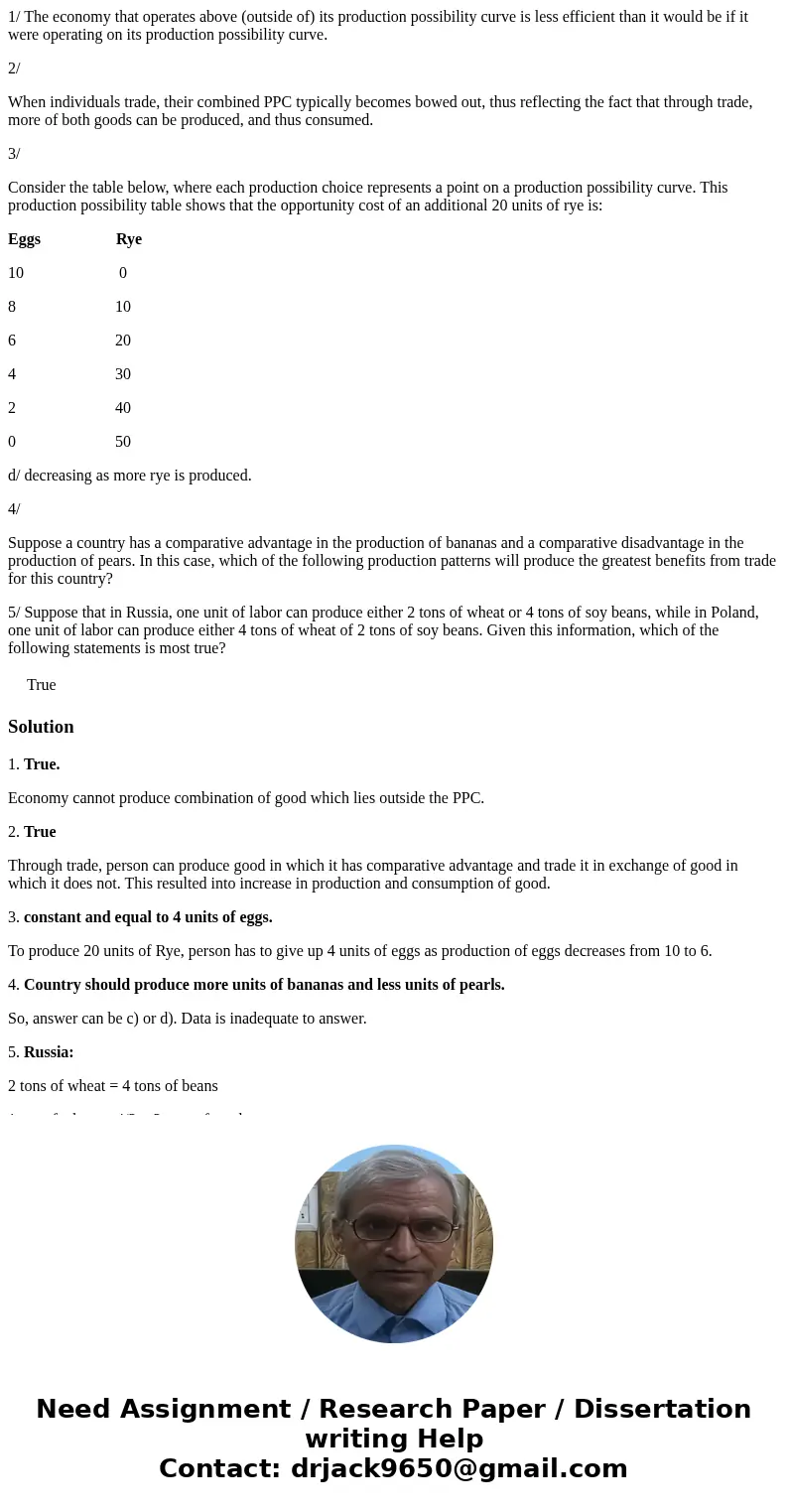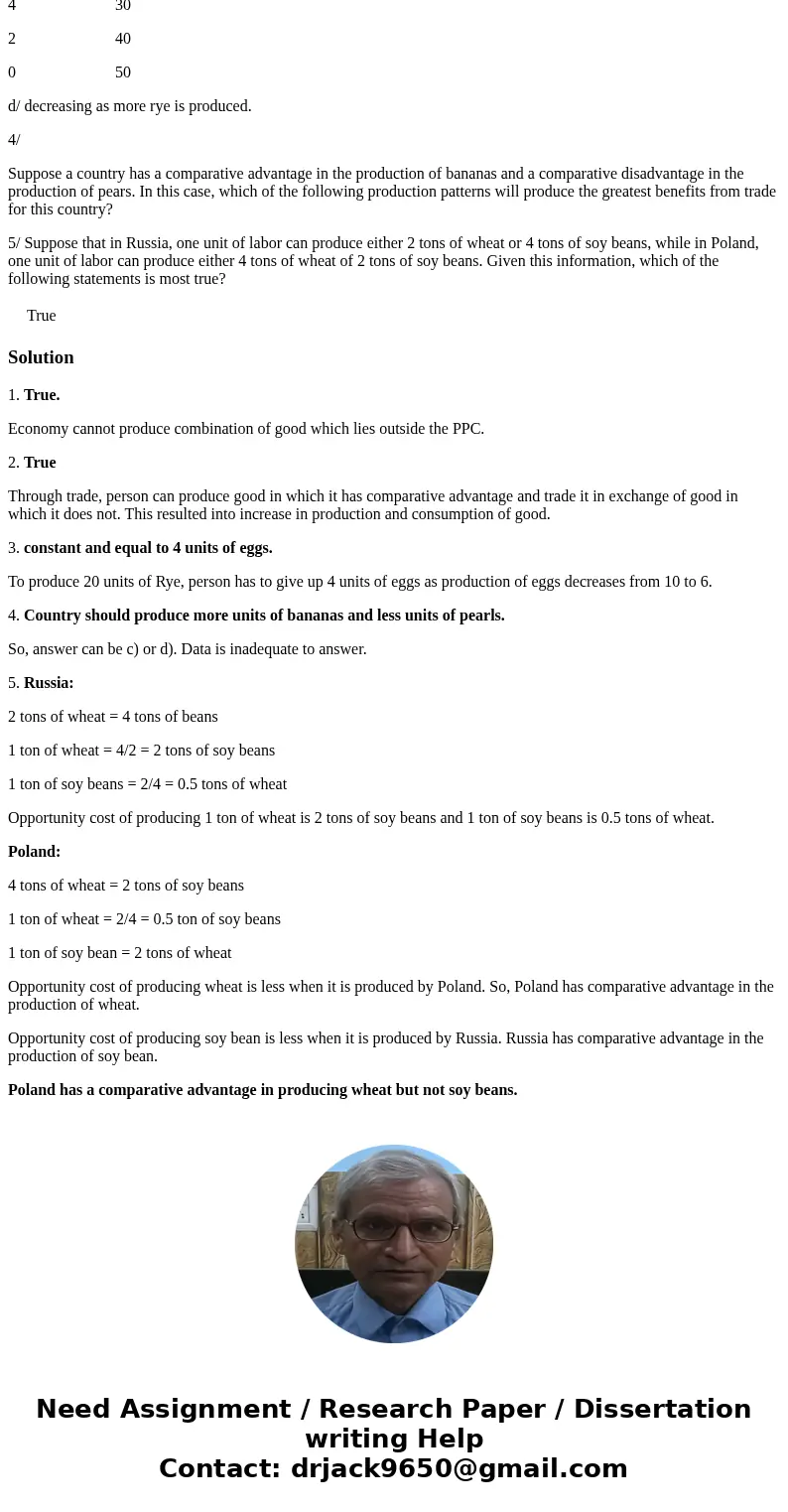1 The economy that operates above outside of its production
1/ The economy that operates above (outside of) its production possibility curve is less efficient than it would be if it were operating on its production possibility curve.
2/
When individuals trade, their combined PPC typically becomes bowed out, thus reflecting the fact that through trade, more of both goods can be produced, and thus consumed.
3/
Consider the table below, where each production choice represents a point on a production possibility curve. This production possibility table shows that the opportunity cost of an additional 20 units of rye is:
Eggs Rye
10 0
8 10
6 20
4 30
2 40
0 50
d/ decreasing as more rye is produced.
4/
Suppose a country has a comparative advantage in the production of bananas and a comparative disadvantage in the production of pears. In this case, which of the following production patterns will produce the greatest benefits from trade for this country?
5/ Suppose that in Russia, one unit of labor can produce either 2 tons of wheat or 4 tons of soy beans, while in Poland, one unit of labor can produce either 4 tons of wheat of 2 tons of soy beans. Given this information, which of the following statements is most true?
| True |
Solution
1. True.
Economy cannot produce combination of good which lies outside the PPC.
2. True
Through trade, person can produce good in which it has comparative advantage and trade it in exchange of good in which it does not. This resulted into increase in production and consumption of good.
3. constant and equal to 4 units of eggs.
To produce 20 units of Rye, person has to give up 4 units of eggs as production of eggs decreases from 10 to 6.
4. Country should produce more units of bananas and less units of pearls.
So, answer can be c) or d). Data is inadequate to answer.
5. Russia:
2 tons of wheat = 4 tons of beans
1 ton of wheat = 4/2 = 2 tons of soy beans
1 ton of soy beans = 2/4 = 0.5 tons of wheat
Opportunity cost of producing 1 ton of wheat is 2 tons of soy beans and 1 ton of soy beans is 0.5 tons of wheat.
Poland:
4 tons of wheat = 2 tons of soy beans
1 ton of wheat = 2/4 = 0.5 ton of soy beans
1 ton of soy bean = 2 tons of wheat
Opportunity cost of producing wheat is less when it is produced by Poland. So, Poland has comparative advantage in the production of wheat.
Opportunity cost of producing soy bean is less when it is produced by Russia. Russia has comparative advantage in the production of soy bean.
Poland has a comparative advantage in producing wheat but not soy beans.


 Homework Sourse
Homework Sourse